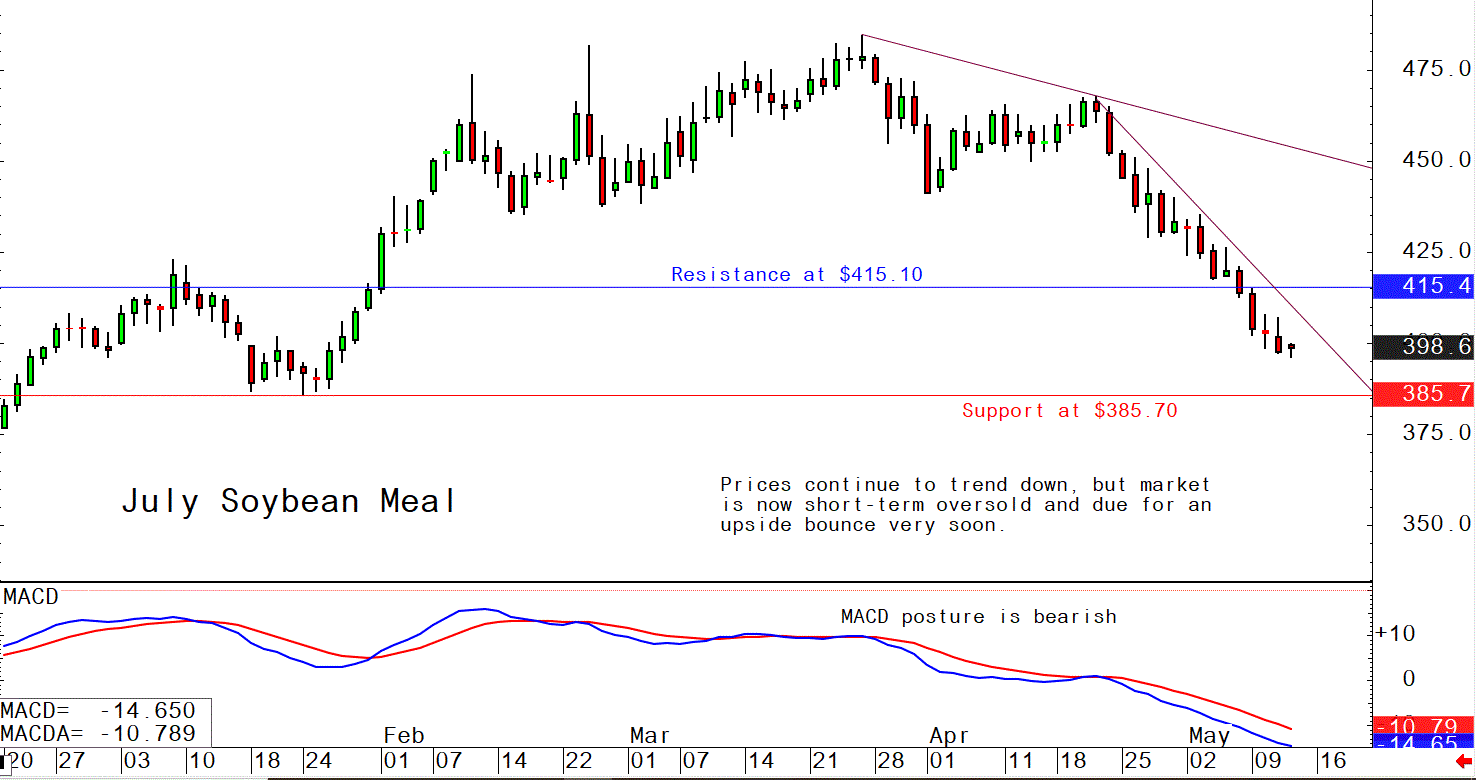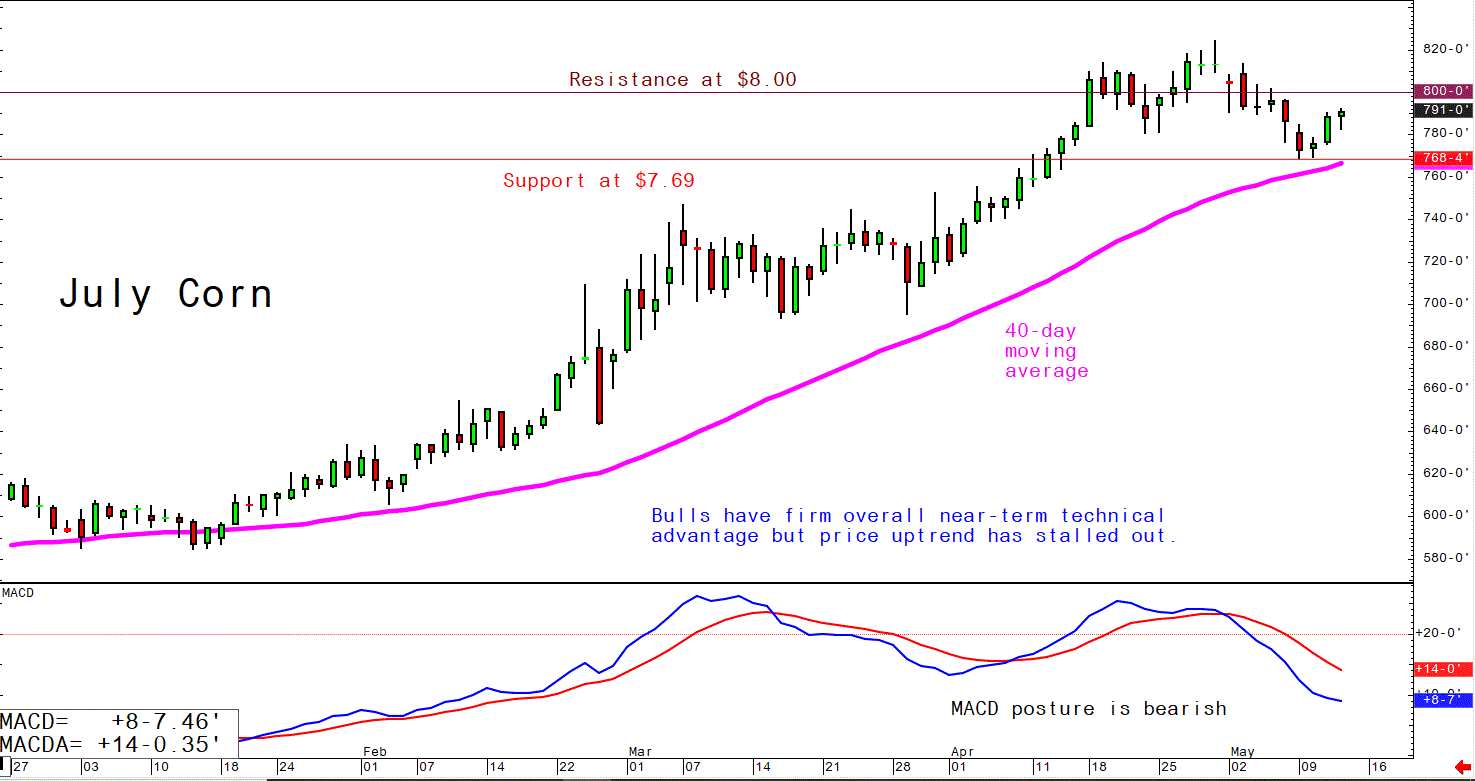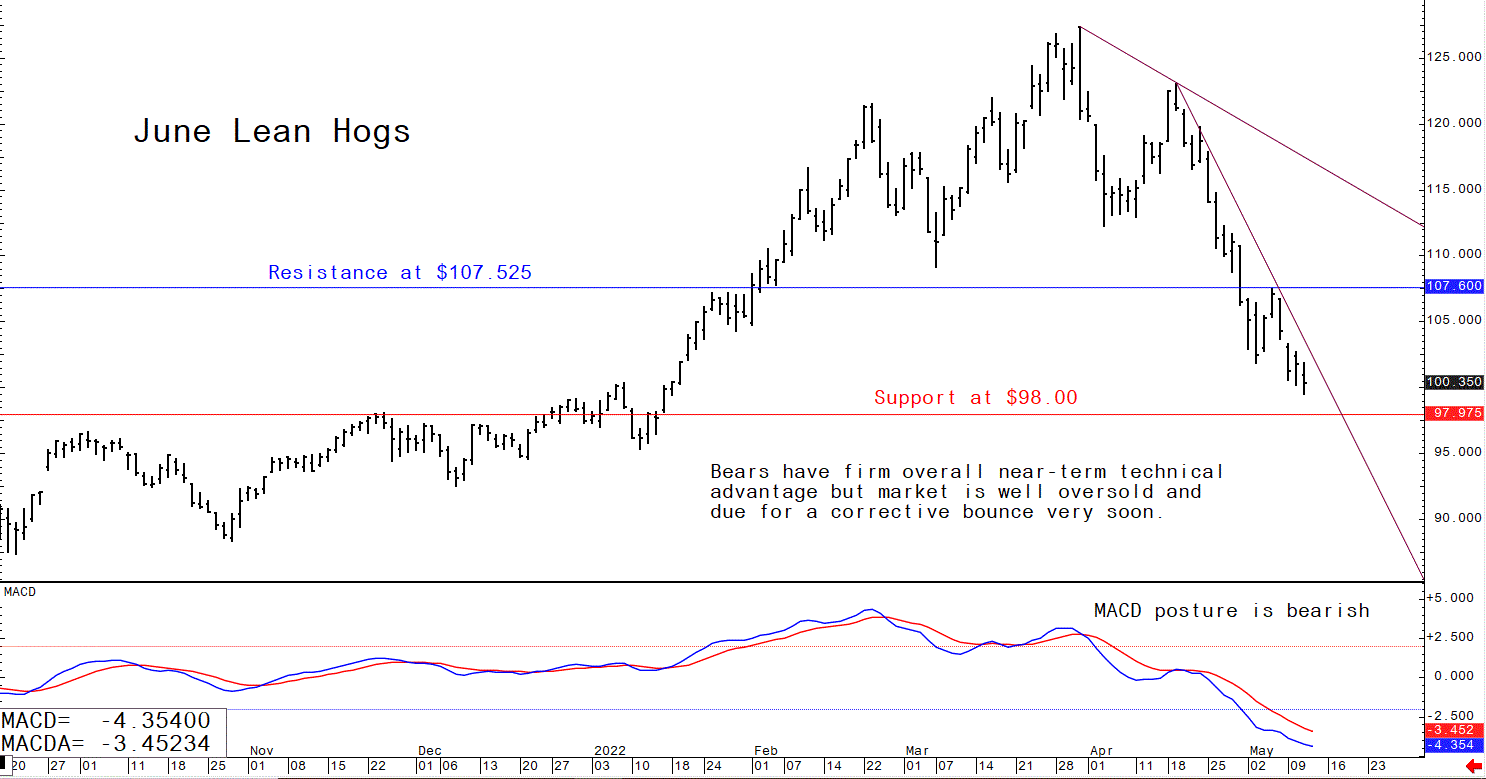



Pig outlook—May 12: Lean hog futures continue to bleed lower
Analyst Jim Wyckoff shares an update on the US futures market, USDA reports and global swine newsThe pig traders’ perspective: June lean hog futures are at a rare discount to the CME lean hog cash index for this time of year. The cash index pattern this year is similar to 2019 when prices posted an early seasonal peak during spring and then declined into early July. In 2019, the cash index then firmed to near the previous high for the year in late July before slumping seasonally. Slumping wholesale pork prices are fueling concern over demand. Pork cutout values have dropped near three-month lows amid lackluster movement, driving worries that elevated retail meat prices and high inflation in general are curbing consumer buying just ahead of the summer grilling season, typically a time of firm demand. The charts remain fully bearish for the nearby lean hog futures contracts, suggesting more sideways-to-lower trading action in the near term.
Latest US Department of Agriculture (USDA) reports, and other news
A bit better week for US pork export sales
USDA Thursday reported US pork net export sales of 26,300 MT for 2022 were up 10 percent from the previous week and 14 percent from the prior 4-week average. Increases were primarily for Mexico (9,600 MT, including decreases of 700 MT), China (4,700 MT, including decreases of 300 MT), South Korea (3,800 MT, including decreases of 700 MT), Japan (3,000 MT, including decreases of 200 MT), and Colombia (2,600 MT). Exports of 33,100 MT--a marketing-year high--were up 3 percent from the previous week and 9 percent from the prior 4-week average. The destinations were primarily to Mexico (14,600 MT), China (4,300 MT), South Korea (4,000 MT), Japan (3,900 MT), and Colombia (1,500 MT).
USDA Secretary Vilsack reveals $560 million in livestock aid
Vilsack said a smaller second round of payments is planned for livestock producers for those not covered under USDA’s Livestock Forage Disaster Program or other aid efforts. Sen. John Hoeven (R-N.D.) told Vilsack the payment rate for calves under 250 lbs. is too low and not reflective of costs under the Livestock Indemnity Program. Hoeven also said some coverage is needed for animals that get sick and die later — delayed losses. Vilsack told him, “We’re focusing on those two issues” — timeliness and “taking a look at payment rates.” Vilsack says it’s “challenging” because USDA needs to tie livestock aid with what is done for crops. His agency is also looking at ways to “potentially provide for more production information” for “better understanding of how to value livestock at various times depending on the disaster, depending on the weight.”
A topic that wasn’t addressed at the hearing but should have been: Farmers are confused when USDA sends them a check because they are unclear what it is for and how it was calculated. USDA should clearly identify what the payment is for and how it was calculated. Someone who farms crops and raises livestock can’t know for sure whether they received a payment for livestock losses or crop losses. And they can’t know if the calculation is right because it currently doesn’t indicate anywhere.
California Proposition 12 update
Environmental and animal rights groups are pressuring the Biden administration to weigh in on a California Prop 12 case the Supreme Court has decided to hear. Today, the Sierra Club, Humane Society, and Center for Biological Diversity are running an ad in the Washington Post calling for the Biden administration to publicly oppose a legal challenge from the pork industry and Farm Bureau to a ballot measure passed in California that prevents intensive confinement of chickens and pigs.
Tyson Foods Inc. reports soaring profit
The company raised prices for beef, chicken and pork, citing higher costs. The company said it increased prices for beef by an average 23.8% over the three months ended April 2, while its chicken prices increased 14.4% and 10.8% for pork. Tyson said its cost of goods sold increased by 15% over the quarter as the company paid more for animal feed, freight and labor expenses. Tyson Chief Executive Officer Donnie King said Tyson’s price increases are consistent with inflation. “We do not ask the customer to pay for our inefficiencies,” King said on a call with reporters. “We are asking customers to pay for inflation we see throughout the supply chain.”
China’s meat imports plunge in April
China imported 592,000 MT of meat in April, down nearly 36% from last year. China’s preliminary trade data doesn’t break down meat imports by category, but the sharp reduction was due to significantly lower pork arrivals. Through the first four months of this year, imports at nearly 2.3 MMT also fell 36% from the same period last year.
US pork group asks SEC for more time to review climate reporting proposal
National Pork Producer Council (NPPC) officials met last week with senior leadership from the Securities and Exchange Commission (SEC) on the agency’s proposed regulations mandating that publicly traded companies report on their carbon emissions and other climate-related information, including not only their direct greenhouse gas emissions but the GHGs from partner companies, suppliers and distributors throughout the supply chain.
NPPC raised concerns, including the proposal’s potential to expose farmers and ranchers to the risk of litigation and lead to further concentration in and integration of the pork industry.
In late March, the SEC voted 3-1 to advance the rule but provided only a 39-day comment period on the more than 500-page proposal. The deadline for filing comments on the proposed rule is May 20. NPPC signed onto a letter from 120 agricultural groups sent to SEC Secretary Vanessa Countryman asking for an additional 180 days to review and comment on the regulation, which company with experience in environmental, social and governance reporting estimated would cost companies $6.7 billion over the next three years.
The next week’s likely high-low price trading ranges:
June lean hog futures--$95.00 to $107.50, and with a sideways bias
July soybean meal futures--$385.00 to $415.00, and with a sideways bias
July corn futures--$7.70 to $8.24 1/2, and a sideways bias
Latest analytical daily charts lean hog, soybean meal and corn futures












